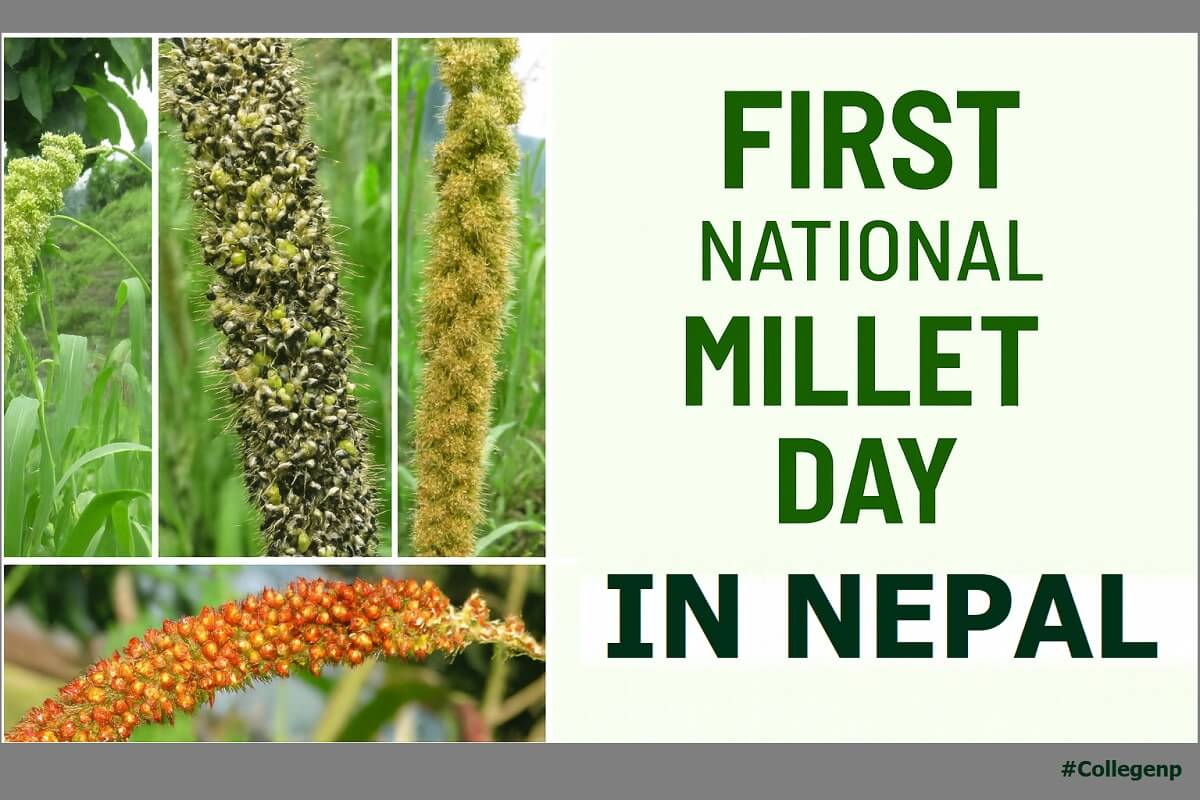
National Millet Day Celebrated with the Theme “Millet-Based Diet: Foundation for Food Security and Healthy Living”
Today, we are observing the First National Millet Day in Nepal with the theme “Millet-Based Diet: Foundation for Food Security and Healthy Living.”
Millet cultivation holds deep social, cultural, economic, and environmental significance in Nepal. Rich in protein, fiber, calcium, iron, and antioxidants, millet plays an essential role in reducing malnutrition and non-communicable diseases and in boosting immunity.
We are in a transitional phase in many ways. Society is rapidly changing. Although over 60% of the population depends on agriculture, the sector contributes minimally to the national economy. Yet agriculture remains the most important and indispensable sector for human survival.
Food comes only from agriculture. However, this vital sector is lagging. Despite high involvement, agriculture yields low income. Efforts for transformation remain weak, and farmers’ movements are not strong. Let us unify these efforts and guide our future through shared experiences and ideas.
The Need for Agricultural Transformation
Without agricultural transformation, national development is not possible. Our population is around 30 million, yet our food production remains insufficient.
Agriculture suffers from a lack of education and youth engagement, as those aged 14 to 65 are less active in farming. Elderly people remain involved, but they are not the active workforce. Many still identify as farmers but are not fully reliant on agriculture. This calls for fundamental reforms.
We must modernize agriculture through mechanization and commercialization to raise productivity and profitability.
Role of Millets in Food Security and Climate Resilience
Millet and similar crops:
-
Improve food and nutrition security
-
Reduce the impact of climate change on agriculture
-
Create jobs and income for smallholder farmers
-
Decrease food and agricultural imports
-
Strengthen national self-reliance
With production and consumption of millets declining due to modern lifestyles and food habits, the Government of Nepal has decided to mark Shrawan 16 each year as National Millet Day, aiming to raise awareness of millets’ role in food security and healthy living.
Growing Attention and Government Initiatives
Interest in millets is rising due to their high nutritional value and climate-resilient nature. The Government of Nepal, in partnership with provincial and local governments, has been actively promoting millets for several years.
Key initiatives include:
-
Allocating conditional federal grants for millet promotion over the past five years
-
Supporting the cultivation of indigenous millets at the provincial and local levels
-
Promoting millet-based dishes in school meal programs and government offices
These efforts have raised awareness and contributed to millet production, consumption, and value chain development.
Widespread Cultivation and Suitability
Millet can be cultivated in almost all geographical regions of Nepal — from the Himalayas and hills to the inner Terai and plains. Among all millet crops, finger millet is the most widely grown.
In terms of national production, millet ranks fourth after rice, maize, and wheat. Compared to other crops, millets are:
-
More tolerant to drought and high temperatures
-
Less prone to pests and diseases
-
Productive even without chemical fertilizers
-
Suitable for cultivation on non-irrigated, less fertile sloping lands
Production Statistics and Potential
According to the Ministry of Agriculture and Livestock Development’s 2080/081 data:
-
Millet cultivation area: 224,935 hectares
-
Total production: 300,732 metric tons
-
Productivity: 1.33 metric tons per hectare
With improved technologies, irrigation, and fertilizer access, there is strong potential to enhance both production and productivity.
Research, Conservation, and Seed Development
The Nepal Agricultural Research Council (NARC) has:
-
Released and registered 8 millet varieties (6 finger millet, 1 foxtail millet, 1 barnyard millet)
-
Conserved 1,140 accessions of millet and wild relatives in the National Gene Bank
Community seed banks are actively working at local levels for the conservation and sustainable use of indigenous millet varieties.
Local governments and the private sector are collaborating to collect, process, and market millet products.
Remaining Challenges and Call to Action
Despite various efforts, millet production remains below expectations. Therefore, we must:
-
Highlight millet's importance and role more widely
-
Expand and promote millet cultivation
-
Focus joint efforts to boost millet production and support food security
Millet is easy to grow in most parts of Nepal and holds multifaceted benefits. By increasing its production and consumption, we can reduce rice imports and improve the livelihoods of small and marginalized farmers.
Let us all work together to realize this vision.


